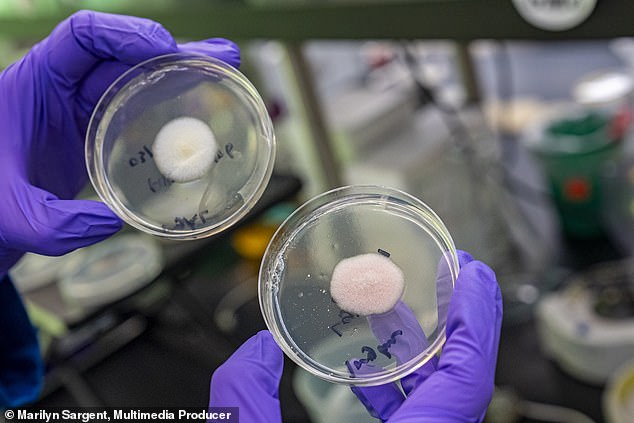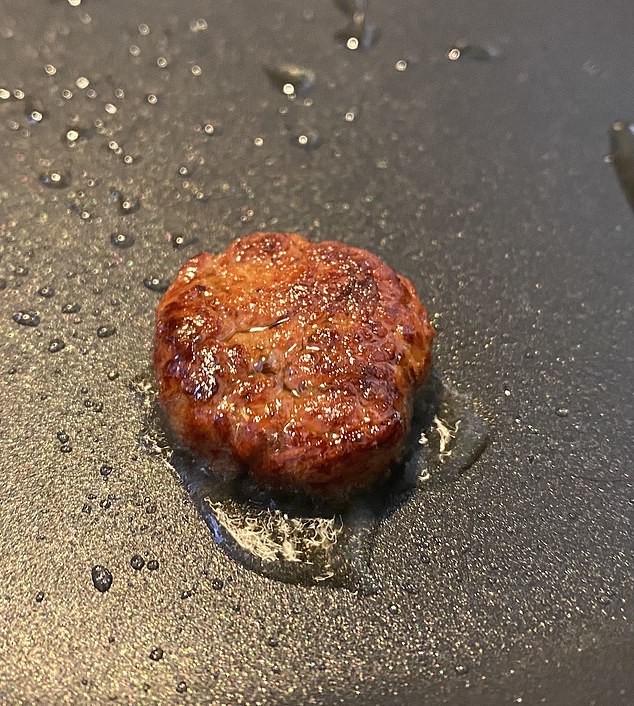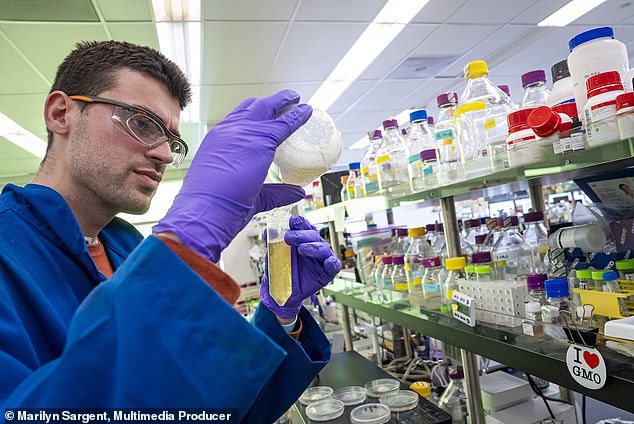Lab-grown meat has been touted as a way to save the environment, but now scientists are going a step further and asking people to eat mold.
Researchers at the University of California (UC) – Berkeley are using genetic engineering to create proteins and meat substitutes from genes found in koji mold, which is already used to ferment sake, soy sauce and miso.
So far, researchers have bioengineered mushrooms into a burger that they fry to make it look like a “tempting-looking burger,” but this is just the starting point for the team.
They hope to transform the mold to control the taste and texture of the product and create a line of foods that appeal to “even the most sophisticated tastes.”

UC Berkeley researchers are altering koji mold genes to create food


Once the genes are manipulated to add iron and fatty acids, the koji culture begins to change from white to red.
Vayu Hill-Maini, a chef turned bioengineer, is working with researchers to create tasty and tempting food sources that are supposedly healthier for consumers and the environment.
Hill-Maini has been studying the fungus called Aspergillus oryzae (koji mold) using a gene editing system called CRISPR-Cas9 to stimulate heme, an iron molecule found in animal tissue that gives color and flavor to the meat.
Heme is also used to make the lab-grown Impossible Burger, which gives it its flavor.
Next, the team increased an antioxidant called ergothioneine, which is linked to cardiovascular health benefits and is used in medications to treat liver damage, Alzheimer’s disease, diabetes, heart disease and other conditions.
After increasing both genes, the previously white mold turned red and, by removing excess water and crushing the mushrooms, it could be shaped into a hamburger.


The researchers created what they called a “tempting-looking burger” from koji mold.


Vayu Hill-Maini is a chef turned bioengineer and hopes to create a new line of edible mold
The mold is not yet ready to be consumed, and the next steps will be to alter the genes to change the texture of the mold by transforming the fibers of the cells to be longer and give the consumer “a more meat-like experience,” Hill said. -Maini said.
But that still won’t be enough to meet the high standards of many consumers, something Hill-Maini said he and his team will look to increase fatty acids, or lipid composition, to add nutrition to the food source.
“I’m very excited about the idea of how we can continue to study the fungus and, you know, modify its structure and metabolism to turn it into food,” Hill-Maini said.
Hill-Maini and his team are promoting the moldy burger as a potentially viable alternative to the beef burger in the future because it’s better for the environment, but recent studies have shown that lab-grown meat will end up having a worse impact on the environment. environment. climate.
Right now, the process used to grow meat, or in this case moldy meat, in a lab is minimal because it’s not as common as real beef, but experts believe labs will ramp up production in the next 10 years. years, which will make it a common kitchen staple.
But scientists estimated that the carbon footprint of the energy needed to mass-produce meat would range from 500 to 3,000 pounds, up to 25 times more than retail beef, according to a study published last year by the Department of Science and Technology. Food Technology. University of California, Davis.
However, the UC Berkeley research team remains optimistic about the effect their moldy foods will have on the culinary future.
“These organisms have been used for centuries to produce food and are incredibly efficient at converting carbon into a wide variety of complex molecules, including many that would be nearly impossible to produce using a classical host such as brewer’s yeast or E. coli. “said Jay Keasling, senior scientist at Berkeley Lab and professor at UC Berkeley.
He continued: ‘By unlocking koji mold by developing these tools, we are unlocking the potential of a huge new host group that we can use to produce food, valuable chemicals, energy-dense biofuels and medicines.
“It’s an exciting new avenue for biomanufacturing.”
